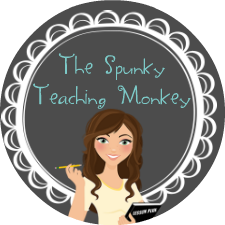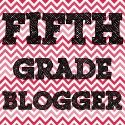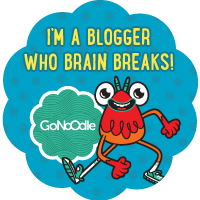I've been doing a lot of research on ADD. I wanted to share some of the important information I learned and the teaching strategies that work for students with ADD. I'll start with explaining the different types of ADD. Then, I will discuss teaching strategies for students with ADD.
7 types of ADD:
According to Dr. Daniel G. Amen, there are 7 types of ADD. I think it's important that teachers understand that ADD is not a one-size-fits-all psychological disorder. I also want educators to understand that it is a developmental disorder (Which means it must be present in childhood. It doesn't appear later in life) and that it is a biological problem (It is not the child's fault or an excuse, but a difference in how the brain functions). In order to understand ADD better, we'll look at the 7 types.
I'll explain the 7 types in brief.
Type 1: Classic ADD- Generally healthy brain at rest, but during concentration there tends to be decreased blood flow in the underside of the prefrontal cortex, cerebellum, and left and right basal ganglia. Primary symptoms: inattentive, distractible, disorganized, hyperactive, restless, and impulsive.
Type 2: Inattentive ADD- Generally healthy brain at rest, but during concentration there tends to be decreased blood flow in the underside of the prefrontal cortex, cerebellum, and basal ganglia. Primary symptoms: inattentive, disorganization, distractible, but not hyperactive.
Type 3: Overfocused ADD- At rest and during concentration there is increased activity in the anterior cingulate gyrus. During concentration there is also decreased activity in the underside of the prefrontal cortex, cerebellum, and basal ganglia. Primary symptoms: inattentive, trouble shifting attention, frequently get stuck in loops of negative thoughts or behaviors, obsessive, excessive worrying, inflexible, frequent oppositional and argumentative behavior. May or may not be hyperactive.
Type 4: Temporal Lobe ADD- At rest and during concentration there is decreased (and infrequently increased) activity in the temporal lobes. During concentration there is also decreased activity in the underside of the prefrontal cortex,cerebellum, and basal ganglia. Primary symptoms: inattentive, easily distracted, disorganized, irritable, short fuse, dark thoughts, mood instability, memory issues, and may struggle with learning disabilities. May or may not be hyperactive.
Type 5: Limbic ADD- At rest there is increased deep limbic activity (thalamus and hypothalamus). During concentration there remains increased deep limbic activity and now there is also decreased activity of the prefrontal cortex, cerebellum, and basal ganglia.
Type 6: Ring of Fire ADD- At rest and during concentration (often worse during concentration) there is a patchy increased uptake across the cerebral cortex with focal areas of increased activity especially in the left and right prefrontal lobes, left and right temporal lobes, and left and right prefrontal cortex. In addition there is often increased activity in the cingulate gyrus. Primary symptoms: inattentive, easily distracted, irritable, overly sensitive, cyclic moodiness, and oppositional.
Type 7: Anxious ADD- At rest and during concentration there is increased activity in the basal ganglia, an area associated with anxiety. With concentration, there is decreased activity in the underside of the prefrontal cortex and cerebellum. Primary symptoms: inattentiveness, distractibility, disorganization, anxiety, tension, a tendency to predict the worst, freeze in rest-taking situations, and tendency toward social anxiety.
For more information visit: http://amenclinics.com or read
Healing ADD: The Breakthrough Program That Allows You to See and Heal the 7 Types of ADD
School Strategies for ADD:
Finding the best classroom and strategies are critical to school success for children with ADD.
The Teacher: The teacher needs to understand ADD or is at least willing to learn about it and should keep regular contact with the parent/guardian of the child with ADD. The teacher should have clear and consistent rules, is willing to motivate and encourage the child, and understand the tremendous effort the child needs to put out in order to be average. The teacher should have an exciting and stimulating presentation style and be willing to give directions slowly and clearly as well as repeat directions. Last, the teacher should NOT undermine the testament that the parent and/or doctor has given the child.
The Learning Environment:
- Keep the walls simple.
- Seat the ADD child up front, ear the teacher, with his or her back turned to the rest of the class, and away from the door.
- Reduce or minimize distractions (both audio and visual). Do not place an ADD student near the air conditioner, heater, high traffic areas, doors, or windows.
- Make earphones available to allow children to decrease auditory distractions.
- Allow for "cooling-off periods" when the student (or teacher) becomes upset.
- Use written, displayed rules in the classroom.
- Surround ADD students with "good role models."
- Encourage cooperative and collaborative learning.
- Provide praise and reinforcement for helping out.
- Help the ADD student feel comfortable seeking help.
- Most fights or "acting out" behavior at school occurs in the cafeteria because of noise and confusion- provide a quiet place for lunch if needed.
- ADD children often come in from recess or lunch "wound up." Have the entire class walk around the room, then pretend to be palm trees swaying in the breeze. "How slowly can you sway?" is a calming down exercise that will help start the late-morning or afternoon session off right.
- If lines are a problem for the child, place him or her at the end of the line where people will not be brushing up against their body: many of these kids are sensitive to touch.

Pacing:
- Adjust time for completion of projects.
- Allow frequent reals and vary activities often. (Use Brain Breaks)
- Omit assignments requiring copying in a timed situation.
- Give only one assignment at a time.
Increasing Attentiveness:
- Pause after a question and look at different students before calling on one to answer.
- Alert students that you are going to ask a question.
- Encourage students to look at the student who is answering.
- Create a level of uncertainty that requires more than passive receptivity (e.g., "What do you think will happen next?")
- If a teacher sees a student's attention wandering, call his name and ask a simple question he can answer.
- Use "attention recording sheets" for self-monitoring. The student marks a plus each time he realizes he has been paying attention and a minus each time he realizes he his mind has wandered.
- Have students record time taken to complete tasks.
- Have students grade their own papers and tests. This instills a habit of reviewing their own work.
- Use nonverbal or secret cues to keep the child on track.
Presentation of Subject Matter:
- Emphasize teaching approach according to style of student (audio/visual/tactile/multisensory)
- Increase class participation in lectures.
- Make the material highly interactive, interesting, novel, and stimulating (Kagan Structures!!!)
- Foster individual or small group discussions.
- Provide taped lectures for replay.
- Use demonstrations to illustrate points.
- Utilize "hands-on" activities.
- Emphasize critical information: teach "The Big Picture."
- Preview new concepts and vocabulary at the beginning of the lesson and highlight them again at the end.
- Use advanced organizers.
- Use computers to help present material.
- Provide visual clues.
- Maintain good eye contact.
- Present more difficult lessons early in the day. (Children with ADD fatigue more easily than others; also their medication often wears off in the afternoon).
- Make auxiliary materials available
- Taped texts
- highlighted texts/study guides
- supplementary materials as needed
- note taking assistance; copies of notes from excellent students
- typed notes form the teacher
- calculators or computer word processors
- adapted or simplified texts
- graph paper for math problems, handwriting, etc.
Assignments:
- Give directions in small, distinct steps.
- Allow copying from paper or book.
- Use written backup for oral instructions.
- Lower reading level of assignment if necessary.
- Adjust length of assignment.
- Change format to fit the need of the child.
- Give assignments in chunks, or a series of smaller assignments.
- Reduce pencil and paper tasks.
- Give oral/visual clues for prompting.
- Allow assignments to be typed or dictated.
- Adapt worksheets.
- Avoid penalizing for spelling errors.
Reinforcement and Follow-Through:
- Use reward systems for positive behavior.
- Use concrete rewards.
- Check often for understanding and review.
- Request parental reinforcement if it is a positive experience for the student and parent.
- Have the student repeat the instructions.
- Make/use vocabulary files.
- Teach study skills.
- Teach organizational skills, and supervise their implementation on a regular basis.
- Use study sheets to organize material.
- Reinforce long-term assignment timelines (cut into shorter chunks)
- Use behavioral contracts/daily or weekly report cards.
- Arrange for tutoring.
- Have regular conferences with student and parents, emphasizing the positive as well as giving feedback on the negative.
Discipline:
- "Firm and kind" are the words to remember.
- When you say something, mean it; and be willing to back it up, but in a kind, caring tone.
- Be very careful not to discipline a child when their misbehavior is the result of confusion or misunderstanding instructions.
- Use discipline for teaching, not punishment.
- Never discipline a child when you feel you're out of control.
- Show disapproval of the behavior, not the child.
- Stay calm and unemotional. (ADD children are often trying to get a rise out of you! Children with ADD do this unintentionally to stimulate their prefrontal cortex.)
- Have well-thought-out consequences to certain behaviors ahead of time.
- Focus 90 percent of your efforts with the child on noticing behavior you like, to set a positive tone.
- Have frequent contact with parents.
Useless and/or Harmful Strategies:
- Tell the child or teen to try harder. (The harder they try, the worse it gets. Remember, when someone with ADD tries to focus their prefrontal cortex shuts down. Their brain defies them.)
- Lecture a student about showing his "true" ability.
- Notice only the negative.
- Compare the student to other students. (This shouldn't be done with any child!)
Well, I hope this was informative and beneficial! I have learned a lot about ADD, and I have ADD as well. If you have any questions, I probably know the answer! :-p




























%2BMelonheadz%2BIllustrating%2BLLC%2B2014%2Bcolored.png)

%2BMelonheadz%2BIllustrating%2BLLC%2B2014%2Bcolored.png)


%2BMelonheadz%2BIllustrating%2BLLC%2B2014%2Bcolored.png)






























